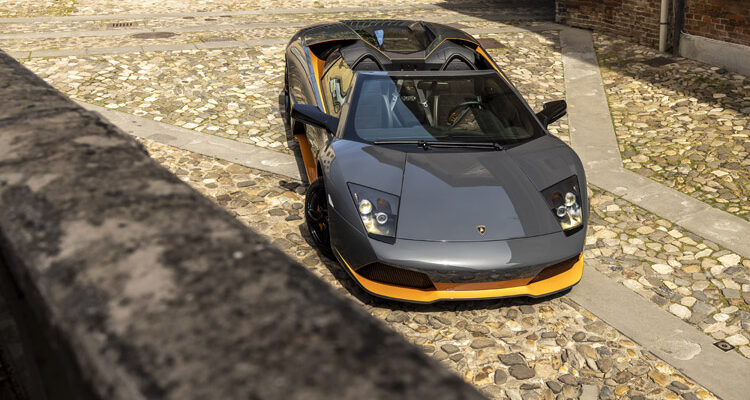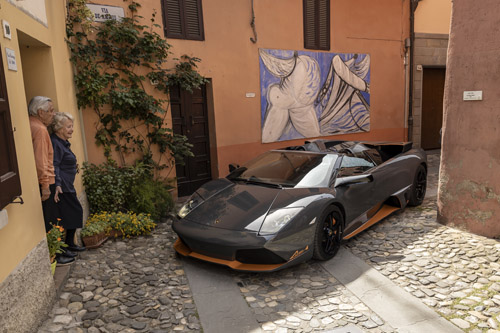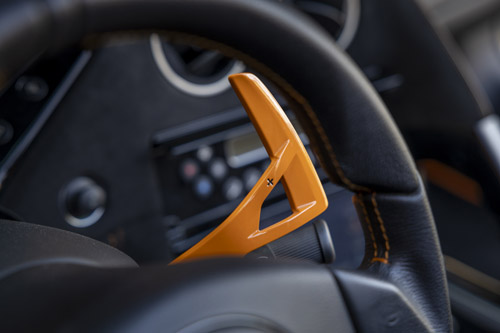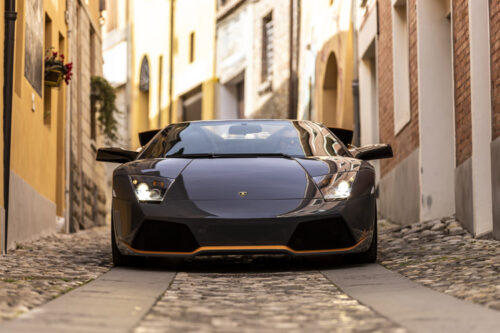Bologna, Italy — Like many folks in my profession, I am an avid collector of diecast cars. Yes, it’s true; we car journalists, who get to experience all manner of motors over the course of a year or what have you are still smitten by those built-to-scale four-wheeled marvels we grew up with as kids.
When it comes to diecast collecting – like many things in life – you rarely forget your first or your early favourites and all these years later, I’ll never forget one of mine: a 1:18 scale Lamborghini Murciélago finished in Verde Mantis green, a sort of pastel-y green that the builders of my toy, AutoArt, absolutely nailed. It was then I fell in love with the Murci and knew that one day come hell or high gas prices, I was going to have to drive one.
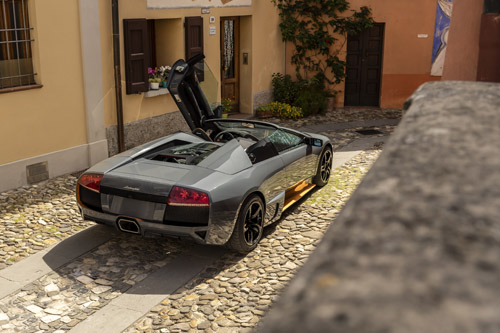
As the years went on, my tastes changed a little but never strayed to too far from the original version of the Murciélago, first released in 2001 for the 2002 model year; those were some halcyon days in the supercar world, with both the Enzo Ferrari and Porsche Carrera GT – that brand’s first-ever mid-engined supercar – arriving at around the same time. Through all of that, though, the Lambo burned brightly (the paint helped, of course) in my mind’s eye and eventually in 2009, yet another special edition came out – as Lamborghini tends to do with its models – that made it burn brighter than ever before. Brighter, even, than that beautiful green model that sits on my office shelf to this day.
It was called the “LP 650-4 Roadster” and it came in one colour, and one colour only: matte Grigio Telesto grey with bright “Arancio LP 650-4” orange highlights (even the accent colours get fancy names in Lamborghini’s world) sprinkled around both inside and out. Somehow, in that tint the active aero wings either side and back of the driver, the oblong wing mirrors and gaping front cooling ducts just stand out that much more. It wasn’t the most sparkly Murciélago to ever come out – wasn’t the most powerful – but something about it spoke to me. When further research revealed that they were going to only make 50 I thought to myself “ah. So that’s it then. That’s why it’s got me”. Either way, with such a low unit count, I was pretty sure my ever driving one was out of the question.
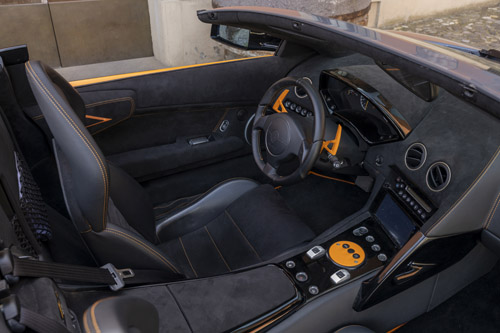
By that time, though, I had driven a Murciélago, but it was as part of one of those rent-a-supercar deals where they keep you on a tight leash in a convoy; not much room to stretch a car’s legs. A car like the Murciélago? Well, let’s just say it needs a lot of room. Added to which, the version they had was an aftermarket RWD manual conversion, so it was a bit of a Frankencar and didn’t sit right with me, spoiled brat that I was. My Murci itch was nowhere near scratched.
Well, fast forward 10 or so hardworking years later and wouldn’t you know it, against all odds, I once again had a Murciélago key fob in my hot, sweaty palm. And this was not just any one; this was – ah yes – the LP650-4 and about as far from a supercar rental service as you can get: this one belonged to Lamborghini and it continues to call Sant’ Agata Bolognese its home.
It’s hard to put into words the feeling of striding up to one of these sitting on the sunbaked pavement just outside of its birthplace, swinging open that classic scissor door and taking it all in. For a car person of any kind, this is kind of a Holy Grail experience. It is however, a very imposing thing when seen in person, prompting me to quietly whisper to myself “please have mercy on me, Murci.”
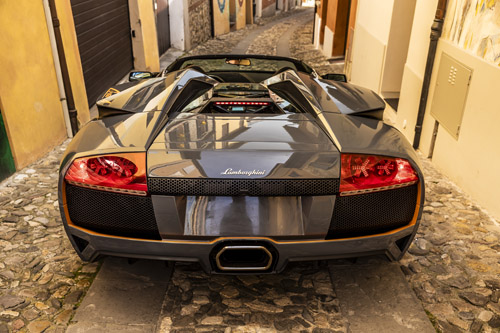
So much so that it hardly mattered how after sliding into the bucket seat, looking out over that thick-rimmed steering wheel and bright Arancio LP 650-4 paddle shifters, you start to realize that whooo boy, cars – even supercars – have come a loooong way in 20 years. In my specific case, I had firsthand knowledge of this because not long before driving my dream Lamborghini supercar, I had driven their latest hypercar, the Revuelto.
That car’s ultra hi-definition displays, metallic switchgear and carbon fibre are replaced in this Murciélago with a whole lot of plastic, buttons that you can tell have seen a few things, pretty basic seats, and a central infotainment display that is a 1982 Zenith to the Revuelto’s LE OLED 128K bajillion colour item.
The seating position is also odd; in the Revuelto, you sit low and surrounded by the car. In the Murciélago, you very much get the sense that you’re on top of it thanks to the ultra-low cowl. It provides a great view forwards, but it is an odd sensation. As I sat in the LP 650-4, I was reminded that big money or no, late ‘90s and early ‘00s supercars were very much about the drive, and creature comforts be damned. Remember; that Murciélago isn’t that far removed from the Diablo, which used a truck clutch, for goodness sakes.
The LP 650-4, though, doesn’t have a truck clutch. In fact, it doesn’t have a clutch at all in the traditional sense in that there’s no third pedal to operate. This was only available as an E-Gear semi-automatic car which asks the driver to flip the paddles, and it takes care of the rest.
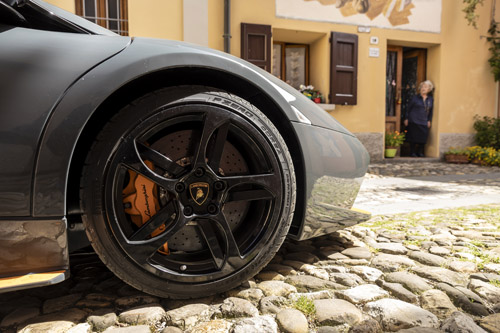
At least it’s supposed to; much like I was taken aback by how spartan the interior was, I was equally so when it came to setting off. Admittedly, I was at a bit of a disadvantage since I was starting on a pretty steep drive but it didn’t take a long time behind the wheel to be reminded of what I’d read about these for years: the E-Gear transmission is an early entrant in the world of semi-automatic gearboxes that pretty much every manufacturer uses these days. In an older supercar like this it leads to some janky progress, especially at low speeds. Lambo wasn’t alone in this, either; Ferrari’s early “F1” semi-autos had their own issues to deal with.
However, once I got past the initial shock of a Lamborghini-owned classic being so ornery (part of the charm, I suppose) and out onto the open road, it all came into focus. Once the pace picks up, the E-Gear settles down and the shifts – while still needing a little finessing, which can be tough with a paddle shifter – got much smoother, it was time to get down to the business of getting down,
With 650 horsepower on-tap from a 6.5-litre V12, the LP 650-4 (jeez that’s a lot of fives and sixes) is a cracker of a motor. It’s naturally aspirated so there is no lag on tip-in, hardly any dip in power between shifts and with that kind of power the wide, fat-tired Murciélago positively shrinks around the driver. Even though that motor is low-tech by today’s standards, it is 100 per cent able to deliver all the thrills of a modern car. Actually, more thrills; the shriek that emanates from the intake just behind your head is ethereal, drowning out even the ever-present wind noise the accompanies a fast drive in a drop-top.
I think the most impressive bit, though, was the steering and the handling. From looking at it, you’d think the Murci would require an armful to operate but so well-tuned is the steering and suspension that it’s a car that drives a whole lot smaller than it is. Left-right-left transitions are a joy to undertake, as the width of the car (and tires – the rears measure a colossal 335 mm) plus the responsiveness of its steering rack keep everything flat and sharp through even the most knotty, off-camber and cracked surface turns.
I think that’s what I liked most about the whole experience; as aggressive and scary as the Murciélago looks and sounds, it represents a time in history where the lines on the Lamborghini graph started to cross and their raw performance was met with just a little more accessibility and comfort. That may sound like a strange thing to celebrate from a supercar but consider this: for a company like Lamborghini – not a big company, their VW Group backing notwithstanding – to survive and “keep the crazy”, they were going to have to adapt. Their cars were going to have to be able to do just that much more, and for that much longer. If that’s what it takes for stunning, otherworldly cars like the LP 650-4 to continue to exist, then I’m all for it.



